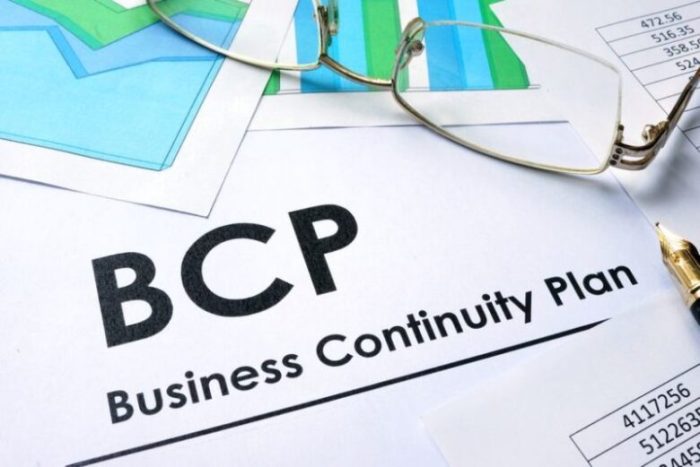In the realm of disaster preparedness, the difference between DRP and BCP often takes center stage. These plans serve as the backbone of any organization’s ability to respond to and recover from unforeseen events. Join us as we delve into the intricacies of DRP and BCP, exploring their key distinctions, interdependence, and best practices.
Disaster Recovery Planning (DRP) focuses on restoring critical IT systems and infrastructure after a disruptive event, ensuring that essential operations can resume promptly. Business Continuity Planning (BCP), on the other hand, takes a broader perspective, encompassing all aspects of business operations, including people, processes, and facilities.
BCP aims to minimize disruptions and ensure that the organization can continue functioning effectively during and after a crisis.
Definition and Overview

Disaster Recovery Planning (DRP) and Business Continuity Planning (BCP) are both essential components of an organization’s risk management strategy. While they share some similarities, there are key differences between the two.DRP focuses on restoring critical business functions in the event of a disaster, such as a natural disaster or a cyberattack.
When comparing DRP and BCP, it’s essential to consider their respective focuses on disaster recovery and business continuity. To delve deeper into this topic, it’s helpful to explore questions to ask an employer about their disaster recovery and business continuity plans.
By understanding the differences between these plans, you can ensure your organization is adequately prepared to respond to disruptions and minimize their impact.
The goal of DRP is to minimize the impact of a disaster on the organization’s operations and to ensure that critical business functions can be resumed as quickly as possible.BCP, on the other hand, takes a broader view of business continuity.
It focuses on ensuring that the organization can continue to operate in the face of any type of disruption, including disasters, but also including things like power outages, equipment failures, or supply chain disruptions. The goal of BCP is to ensure that the organization can maintain its essential functions and meet its obligations to customers, employees, and other stakeholders.
DRP vs. BCP
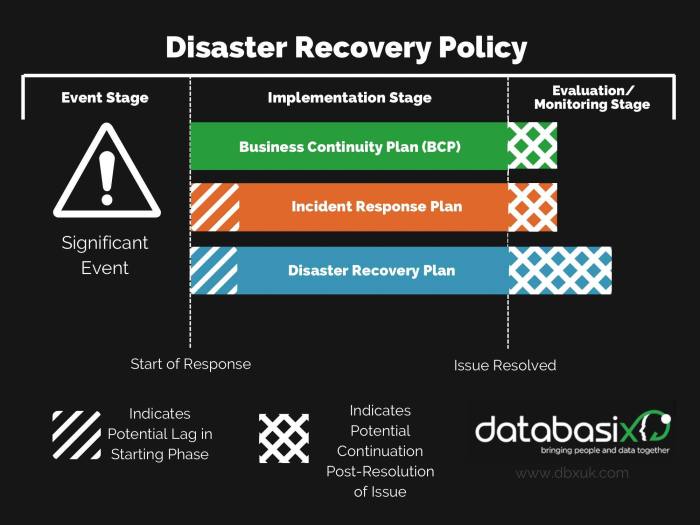
Key Distinctions
DRP and BCP share some similarities, but they have distinct characteristics that set them apart. These distinctions are evident in their objectives, plans, and processes.
Recovery Time Objectives (RTOs)
RTOs define the acceptable amount of time it takes to restore critical business functions after a disruption. DRP focuses on restoring individual systems and applications, while BCP considers the broader impact on business operations and customer service.
Recovery Point Objectives (RPOs)
RPOs determine the maximum amount of data loss that can be tolerated after a disruption. DRP aims to minimize data loss by backing up data frequently, while BCP considers the criticality of data and the impact of data loss on business operations.
Incident Response Plans
Incident response plans Artikel the steps to be taken in the event of a disruption. DRP plans focus on technical recovery procedures, while BCP plans address the overall coordination and communication required to manage the incident.
Business Impact Analysis (BIA)
BIA is a process to identify and prioritize critical business functions and their dependencies. DRP uses BIA to determine the systems and applications that need to be recovered first, while BCP uses BIA to assess the overall impact of a disruption on business operations.
Integration and Interdependence
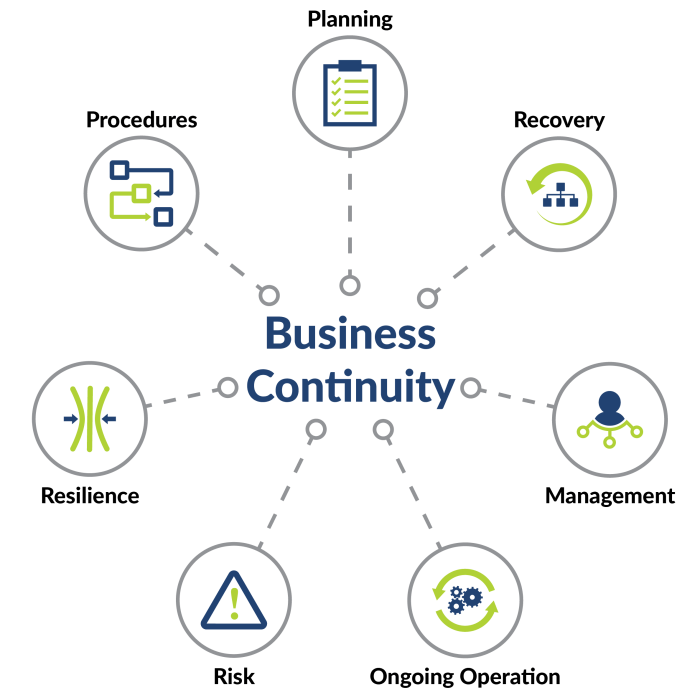
Disaster recovery planning (DRP) and business continuity planning (BCP) are closely related and complementary processes that work together to ensure an organization’s ability to recover from a disruptive event and continue operating its critical functions.
DRP focuses on the recovery of IT systems and infrastructure, while BCP focuses on the recovery of business processes and operations. Both DRP and BCP are essential components of a comprehensive disaster recovery and business continuity strategy.
Integration of DRP and BCP
DRP and BCP should be integrated into a comprehensive disaster recovery and business continuity strategy that addresses all aspects of an organization’s operations. This strategy should include:
- A clear understanding of the organization’s critical business functions and the resources required to support them.
- A plan for recovering IT systems and infrastructure in the event of a disaster.
- A plan for recovering business processes and operations in the event of a disaster.
- A plan for communicating with employees, customers, and other stakeholders during and after a disaster.
- A plan for testing and exercising the disaster recovery and business continuity plans.
Best Practices and Implementation
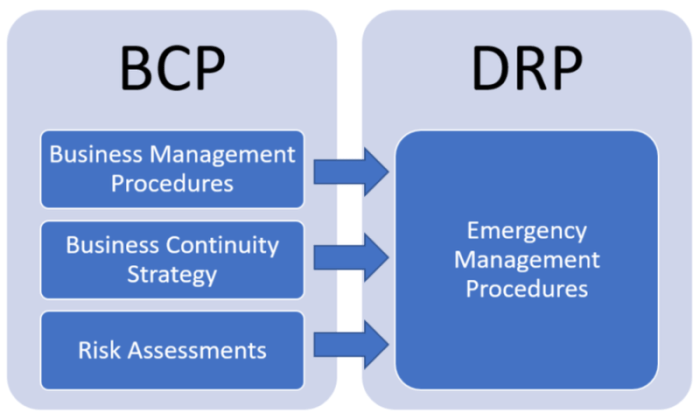
Establishing robust DRP and BCP plans requires adherence to best practices. This section provides guidance on developing, implementing, and maintaining effective plans.
To ensure comprehensive protection, organizations should conduct thorough risk assessments to identify potential threats and vulnerabilities. This analysis should consider both internal and external factors, including natural disasters, cyberattacks, and human errors. Based on the risk assessment findings, organizations can develop tailored recovery strategies that Artikel the steps to be taken in the event of an incident.
Testing and Exercising Plans
Regular testing and exercising of DRP and BCP plans are crucial for ensuring their effectiveness. This involves simulating real-world scenarios to evaluate the plans’ viability and identify areas for improvement. Testing can be conducted through tabletop exercises, walkthroughs, and full-scale simulations.
By proactively testing plans, organizations can enhance their preparedness and confidence in their ability to respond effectively to disruptions.
Case Studies and Examples: Difference Between Drp And Bcp
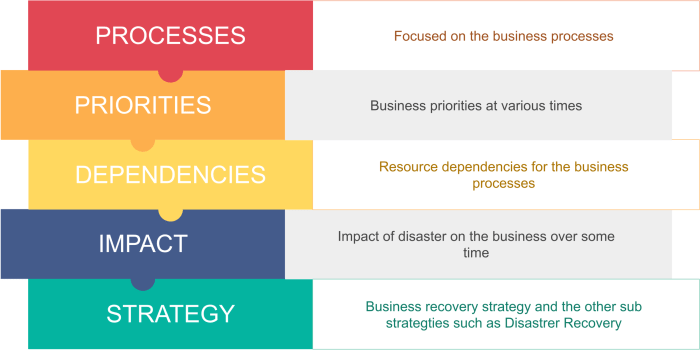
Real-world case studies showcase the successful implementation of DRP and BCP, providing valuable insights into best practices and lessons learned.
One notable case study is the implementation of a comprehensive DRP at a large financial institution. The DRP included detailed plans for data recovery, system restoration, and business continuity operations. During a major natural disaster, the DRP was successfully activated, enabling the institution to resume critical operations within hours.
Lessons Learned and Best Practices, Difference between drp and bcp
- Thorough Planning:The success of the DRP was attributed to meticulous planning, including the identification of critical business functions, resources, and recovery time objectives.
- Regular Testing and Maintenance:The DRP was regularly tested and updated to ensure its effectiveness. This ensured that the plan remained relevant and aligned with the organization’s evolving needs.
- Effective Communication:Clear and timely communication was essential during the disaster response. The DRP Artikeld communication protocols for notifying key stakeholders and coordinating recovery efforts.
- Collaboration and Coordination:The DRP emphasized collaboration among different departments and external stakeholders. This facilitated a cohesive response and ensured that all parties were working towards the same goal.
Q&A
What is the primary difference between DRP and BCP?
DRP focuses on restoring IT systems, while BCP encompasses all aspects of business operations.
How do DRP and BCP complement each other?
DRP ensures the recovery of critical IT systems, while BCP provides a comprehensive framework for maintaining business continuity during disruptions.
What are the key elements of an effective DRP plan?
Recovery time objectives (RTOs), recovery point objectives (RPOs), incident response plans, and risk assessments.
